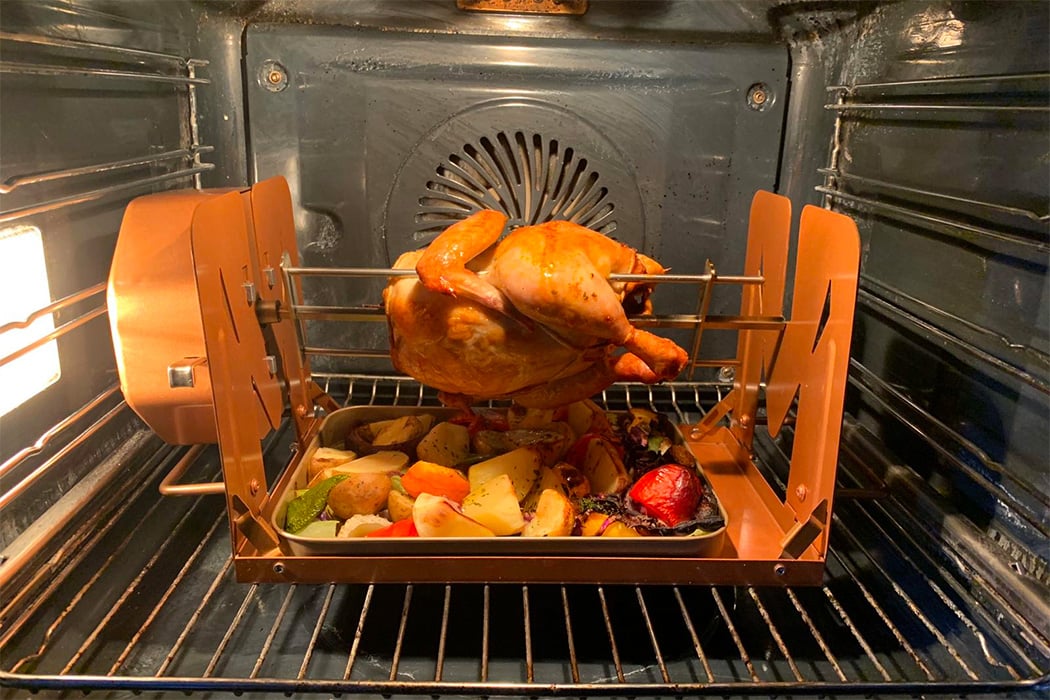Master the Art of How to Season a Rotisserie Chicken for Perfection
Written By James Morgan
There's something incredibly satisfying about the aroma of a perfectly seasoned rotisserie chicken. Barbecue enthusiasts worldwide find joy in crafting that flavorful, juicy bird that spins slowly over the fire, absorbing all the herbaceous and savory seasonings you've so carefully sprinkled on. Here, we'll delve deeply into the most effective ways on how to season a rotisserie chicken to ensure that your next barbecue is a spectacle of culinary excellence.

Why Seasoning Matters
Seasoning is essential because it imparts flavor and can also help to tenderize the meat. A well-seasoned rotisserie chicken stands out not just for its taste but also for the depth of its flavor, making every bite a delight.
Types of Seasonings to Consider
Herbs and Spices
Herbs and spices form the core of any seasoning blend. From classic choices like rosemary and thyme to exotic spices such as turmeric and paprika, the options are limitless.
Marinades
Marinades, often containing acidic elements like lemon juice or vinegar, serve to both tenderize and flavor the chicken. For a tangy twist, you can consider a citrus-based marinade.
Dry Rubs
Dry rubs are a combination of spices and herbs that you physically rub onto the surface of the chicken. Ingredients like garlic powder, onion powder, and brown sugar are common additives.

Step-by-Step Guide to Seasoning Your Rotisserie Chicken
Preparation is Key
Before you dive into seasoning, ensure your chicken is properly cleaned and patted dry. Removing excess moisture is essential for letting the seasonings stick better.
Seasoning the Chicken
- Apply Olive Oil: Olive oil helps to adhere the seasonings and promotes a crispy skin.
- Use Fresh Spices: Freshly ground spices provide a more robust flavor compared to pre-ground ones.
- Season Inside and Out: Dont just season the outside; make sure to get some seasoning inside the cavity for a fuller flavor.
Setting Up the Rotisserie
Properly truss your chicken to ensure even cooking. Here's a handy guide on how to tie a rotisserie chicken.
Cooking Times and Temperatures
Ensuring your rotisserie chicken cooks thoroughly is crucial. Generally, you should cook at medium heat, around 350F to 375F, and it usually takes about 1.5 to 2 hours. Always check the internal temperature which should reach 165F.

Enhancing Flavors Even Further
Injecting Flavor
Flavor injectors can be used to inject marinades directly into the meat for an extra burst of flavor.
Basting and Mopping
Basting with butter or mopping with a flavorful liquid can further enhance the taste and keep the meat moist.

Pairings and Side Dishes
A well-seasoned rotisserie chicken pairs wonderfully with a variety of sides.
Salads
Fresh salads like a Caesar salad or a mixed greens salad work excellently.
Grilled Vegetables
Grilled veggies offer a smoky contrast to the flavorful chicken. Check out some ideas on what goes good with rotisserie chicken.
Breads and Grains
A nice crusty bread or a serving of wild rice can complete the meal.
Common Mistakes to Avoid
Over-seasoning
While it might be tempting to go overboard, it's crucial to find a balance. Too much seasoning can overpower the natural flavor of the chicken.
Inadequate Marination Time
For marinades to work their magic, adequate time is necessary. Ideally, marinate your chicken for at least 46 hours.
FAQ
Is it necessary to let the chicken rest before carving?
Yes, letting the chicken rest for 10-15 minutes helps the juices redistribute, making for a juicier eat.
Can I use frozen chicken?
It's best to use thawed chicken for even cooking and better flavor absorption.
What's the best way to reheat leftover rotisserie chicken?
Reheat in an oven at 375F covered with foil to prevent drying out.
For more tips, check out this guide on how to eat rotisserie chicken.
As an Amazon Associate, I earn from qualifying purchases.



